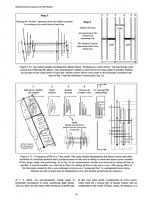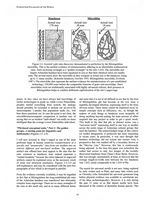 Fig. 4 |
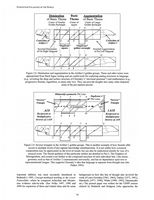 Figs. 8 & 9 |
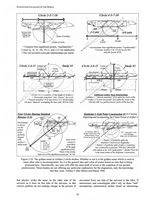 Fig. 10 / Fig. 10 LARGE |
“Mind-boggling regularities which, if valid indicators, would suggest that some Lower Palaeolithic hominins possessed concepts of spatiality significantly different from ours, and apparently much more sophisticated.” - Robert G. Bednarik, Pleistocene Palaeoart of the World, page 1 |
Phi in the Acheulian is the second of two papers presented at the XVth UISPP Congress in Lisbon (September 7, 2006) that offer a completely new perspective on the intelligence of our ancient ancestors. For the past 150 years, early humans have been regarded as inferior to us, unable to create art, think abstractly, or even to speak. In these two papers (Part I being The Graphics of Bilzingsleben), I demonstrate that this picture is not at all accurate and that early peoples such as Homo erectus, Homo ergaster, Neanderthals, and Homo heidelbergensis were just as intelligent as we are in today's modern world. The evidence provided in the two papers shows beyond any reasonable doubt that early people had highly-developed language and even mathematical ability 400,000 years ago.
Although the paper was written for a scientific venue, I hope that the figures offered here will let anyone who is interested see that the picture of early peoples so long-promoted by the scientific community needs to be reexamined with an open mind. The paper demonstrates by way of visual geometry understandable to everyone that
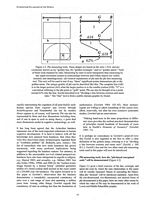 intricate bone engravings created 320,000-412,000 years ago indicate extensive use of the mathematical ratio 1.618 known as Phi, the golden mean, and many other names.
intricate bone engravings created 320,000-412,000 years ago indicate extensive use of the mathematical ratio 1.618 known as Phi, the golden mean, and many other names. Fig. 2 at right shows the three easy-to-understand tools used for measurements in this particular paper. These tools are superimposed over the Bilzingsleben engravings to show that the engravings adhere to the exact same ratio used in the well-known Acheulian handaxe* and other stone tools from the time of Bilzingsleben and earlier (Fig. 4 above and Fig. 13 below left). In fact, Phi in the Acheulian provides the very first proof that the ratio long known to exist in handaxes made by Homo erectus also exists in the engravings made by Homo erectus (e.g., Figs. 8 & 9 and Fig. 10 above, and Fig. 14 below).
GEOMETRIC TOLERANCES: The details in Fig. 10 LARGE. If one would like to see the real details of Fig. 10, click on this link, Fig. 10 LARGE, or the picture at left, and then click on the enlarged picture one more time (the filesize for Fig. 10 LARGE is 460kb so it may load slowly on some computers.)
 One can adjust viewing size of Fig. 10
LARGE by using the "Zoom" tool in your computer's "View" menu.
One can adjust viewing size of Fig. 10
LARGE by using the "Zoom" tool in your computer's "View" menu.In Fig. 10 LARGE, one can clearly see all of the geometric tolerances I applied which will leave nothing whatsoever to the imagination. One can see every point and every line and even how precisely any given line goes through any given point. The reader can also rest assured that the tolerances applied to create Fig. 10 are similar in all of the other Phi in the Acheulian studies as well as in all of my other publications (both past and in press). I emphasize this so that the reader may understand that there is no need for me to use persuading arguments or authority when one can readily see that the geometry is fully able to speak for itself.* This is also the level of completely open and unambiguous data that is presented in the Part I paper, The Graphics of Bilzingsleben (which has been held back from publication since 2006). The Part I paper contains the first unequivocal geometric and linguistic proof of early language.
Here are a few central propositions and discoveries that were first presented in Phi in the Acheulian:
2.) Phi handaxes to Phi microlithic tools. The use of Phi in microlithic tools represents the earliest archaeological evidence of miniaturization adhering to an identifiable mathematical ratio.
 The Phi microliths also
represent the earliest evidence for miniaturization of a
pre-established technology as much as 400,000 years before the comparable
histories of gears and microchips.
The Phi microliths also
represent the earliest evidence for miniaturization of a
pre-established technology as much as 400,000 years before the comparable
histories of gears and microchips.*FOR MORE DETAIL ON THIS PARTICULAR SUBJECT, see my comment regarding the handaxe shape in microliths, April 26, 2009, on Michael Balter's Science blog, Origins: a history of beginnings: "Is a Hand Ax Really a Hand Ax?"
3.) Phi-based conceptual units, Part 3: The first archaeological evidence showing the transformation of a specific and "measurable" idea from one medium into an entirely different and unrelated medium.
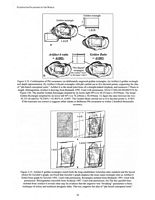 This
is part of the premise of phi-based conceptual units and is quickly
demonstrated by superimposing a Bilzingsleben phi-based microlith over
a set of Bilzingsleben engraved phi rectangles, the rectangles of
which, themselves, are in phi relationship with each other, that
is, sized to each other in accordance with the ratio (Fig. 13, right).
This
is part of the premise of phi-based conceptual units and is quickly
demonstrated by superimposing a Bilzingsleben phi-based microlith over
a set of Bilzingsleben engraved phi rectangles, the rectangles of
which, themselves, are in phi relationship with each other, that
is, sized to each other in accordance with the ratio (Fig. 13, right).4.) Diminution and augmentation of engraved motifs (e.g., reducing or increasing the length or size of phrases or motifs) demonstrating the ability to reproduce the same motif in different sizes or variations (Figs. 8 & 9, above).
5.) The golden mean in Artifact 2 circle studies suggests a grasp of ratio in Homo erectus that well transcends the more crude and/or predictable sense of ratio in modern human culture. It is proposed in the paper that part of our narrow modern sense of ratio is due to our preoccupation with dividing everything into equal increments. The idea of "phi-based conceptual units" suggests a more complex and more subtle mindset in Homo erectus than in modern Homo sapiens at least more so when compared with the standard Western science mindset (Fig. 10 and Fig. 10 LARGE, above).
6.) Phi-based conceptual units, Part 5: Fractal associations with Artifact 6. Phi comparisons carried out to 5 decimal points. To demonstrate how completely absorbed into the ape-man paradigm most anthropologists have been trained in, after seeing the phi evidence, a very common response has been something like, "maybe this proves that Homo erectus 'wasn't' intelligent." The only thing statements such as this prove is how willing predisposed anthropologists are at continuing to try and fit square pegs into round holes at whatever cost; it is actually no fault of theirs, but shows how powerful a popular paradigm can be (Fig. 12 above right).
7.) Phi-based conceptual units, Part 6, Fractal associations between engravings and microliths (Fig. 13 above right).
EXTENT OF THE DATA: The figures offered here are only a few of the 24 that were published. There are over a hundred more studies which the author produced in preparation for the UISPP Congress
 (all
intended to make the point visually and clearly using such as
triangles,
trapezoids, parallelograms, etc.), so the reader may rest assured
that there already exists substantially more evidence in support of the
ideas put forth.
(all
intended to make the point visually and clearly using such as
triangles,
trapezoids, parallelograms, etc.), so the reader may rest assured
that there already exists substantially more evidence in support of the
ideas put forth.The reader is invited to click on any of the thumbnails to see that even 400,000 years ago, work of extremely fine artistic quality, precision and detail was being produced which is well beyond the limited capabilities for early peoples long promoted by the scientific community. In reality, the abilities of these early people were comparable to what people are capable of today and were in many ways more sophisticated. These extinct elephant bone engravings are all the more remarkable seeing that they were engraved using a flint knife (see also, "Straight edge theory" forwarded in the papers, Musings on the Palaeolithic fan motif and The Graphics of Bilzingsleben).
The engravings, which were found in association with at least two Homo erectus individuals, offer the most direct evidence of Homo erectus language yet discovered. The recent sudden rush of language-confident theories which are based on indirect circumstantial evidence such as quasi-language genes or pecked holes in rock are emboldened in their confidence from research presented in The Graphics of Bilzingsleben and Phi in the Acheulian.
Here is the abstract as published in the scientific venue:
Abstract: The ratio 1.618, commonly known as the golden ratio or phi, has fascinated the modern mind since the beginnings of Greek science and philosophy, and many have made cases for its use as early as the Sumerian and Egyptian civilizations. In this paper, however, I hope to demonstrate that interest in the ratio extends much farther back in time than a mere four or five thousand years, being already highly developed during the Lower Palaeolithic. At whatever point it first occurred, I suggest that interest in phi was an essential human trait that grew in tandem with the human capacity for analogy. With the cranial ratios of Turkana Boy (Walker and Leakey 1993) and the stone handaxe ratios of Gowlett (1984, 1993) serving as stable early references, I provide evidence of phi spanning 1.6 million years time. In the central studies, I expand on the work of Mania and Mania (1988) and Bednarik (1995), and demonstrate that the hominids at Bilzingsleben, Germany, 350,000 years ago, continued the long established phi tradition in ways that prove its existence beyond the long-debated handaxe ratio issue into microlithic tools and intricate bone engravings, adhering more accurately and more consistently to the ratio than the most often cited examples in modern culture. The intense concentration of phi in so many forms within Bilzingsleben is well beyond any expectations of chance. Based on the evidence, I suggest that phi was not only a centralizing element in general Acheulian culture but due to its intrinsic analogical quality played a defining role in the actual development of human cognition. Deliberate use of phi suggests that human understanding of analogy occurred much earlier in our history than ever anticipated, and by way of a “mathematical idea” which has remained firmly rooted in human thought to this very day.
Keywords: Cognitive Archaeology, Bilzingsleben, Phi, Analogy, Linguistics
Feliks, J. 2008. Phi in the Acheulian: Lower Palaeolithic intuition and the natural origins of analogy. In Bednarik, R. G. and D. Hodgson (eds), Pleistocene palaeoart of the world, pp. 11-31.
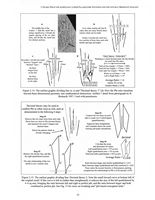 Proceedings of the XV UISPP World Congress
(Lisbon, 4-9 September 2006), BAR International Series 1804, Oxford.*
Proceedings of the XV UISPP World Congress
(Lisbon, 4-9 September 2006), BAR International Series 1804, Oxford.*Feliks, J. 2006. Phi in the Acheulian: The natural inclination of Homo erectus toward the golden mean. Program #C80-06 presented at the XV UISPP World Congress (Lisbon, 4-9 September 2006). 56 color slides with thumbnails handout.**
**Phi in the Acheulian is Part II of a two-part visual program and thesis offering an entirely new perspective regarding early peoples such as Homo erectus, Homo ergaster, Homo heidelbergensis, and Neanderthals. The Part I program and thesis is The Graphics of Bilzingsleben.*** At right is Fig. 14 from Phi in the Acheulian.
***Feliks, J. 2010 (in press). The graphics of Bilzingsleben: Sophistication and subtlety in the mind of Homo erectus. Proceedings of the XV UISPP World Congress (Lisbon, 4-9 September 2006), BAR International Series, Oxford.
Proceedings of the XV UISPP World Congress (Lisbon, 4-9 September 2006), BAR International Series, Oxford.
*(BAR is British Archaeological Reports.)
PRE-PUBLICATION REGISTRATIONS FOR THE GRAPHICS OF BILZINGSLEBEN AND PHI IN THE ACHEULIAN
This information is being posted only because the Graphics presentation and/or thesis paper have been held back from publication for several years while changing hands several times. Unfortunately, some of this material or motivation and confidence derived from the author's work (Graphics & Phi) has already shown up on the web and in academic papers without citation of the original sources, including by those who have had privileged access to the author's supplementary materials and references. This, of course, is part of the reason that international copyright exists. Scholars need to have confidence that material being considered for publication remains in confidential trust and that once it is published any work which is based on that material or inspired by it will cite the original source:
Registered 2006: http://bulk.resource.org/copyright/hids/hid_17/hid_17850500-17850799.txt [Txu 1-323-001: Two Visual Thesis Programs (112 slides, Thumbnails Handout): 1.) The Graphics of Bilzingsleben, 2.) Phi in the Acheulian. U. S. Copyright Office]
Registered 2007: http://bulk.resource.org/copyright/hids/hid_20/hid_20849600-20849899.txt [Txu 1-350-724: Publication Materials for the Lisbon Programs: 1.) The Graphics of Bilzingsleben (in thesis form), 2.) Phi in the Acheulian (in thesis form), 3.) Publication Addendum, 4.) Copy of the original Thumbnails Handout. U. S. Copyright Office]
OTHER PUBLICATIONS BY THE AUTHOR
Feliks, J. 2012. Five constants from an Acheulian compound line. Aplimat - Journal of Applied Mathematics 5 (1): 69-74.
Feliks, J. 2011. The golden flute of Geissenklosterle: Mathematical evidence for a continunity of human intelligence as opposed to evolutionary change through time. Aplimat - Journal of Applied Mathematics 4 (4): 157-62.
Feliks, J. 2012. The graphics of Bilzingsleben series: Scientific misconduct over ancient artifact studies and why you should care: Part 7: Who were the people of Bilzingsleben. Pleistocene Coalition News Vol. 4 (Issue 4): 12-14.
Feliks, J. 2012. The graphics of Bilzingsleben series: Scientific misconduct over ancient artifact studies and why you should care: Part 6: The Lower Paleolithic origins of advanced mathematics. Pleistocene Coalition News Vol. 4 (Issue 3): 12-13.
Feliks, J. 2012. 12 Angry Men, starring Henry Fonda: A superb classic film for teaching critical thinking attitude and skills. Pleistocene Coalition News Vol. 4 (Issue 2): 17.
Feliks, J. 2012. The graphics of Bilzingsleben series: Scientific misconduct over ancient artifact studies and why you should care: Part 5: Gestalten. Pleistocene Coalition News Vol. 4 (Issue 2): 11-13.
Feliks, J. 2012. The graphics of Bilzingsleben series: Scientific misconduct over ancient artifact studies and why you should care: Part 4: 350,000 years before Bach. Pleistocene Coalition News Vol. 4 (Issue 1): 10-12.
Feliks, J. 2011. The graphics of Bilzingsleben series: Scientific misconduct over ancient artifact studies and why you should care: Part 3: Base grids of a suppressed Homo erectus knowledge system. Pleistocene Coalition News Vol. 3 (Issue 6): 12-14.
Feliks, J. 2011. The graphics of Bilzingsleben series: Scientific misconduct over ancient artifact studies and why you should care: Part 2: Censoring the world's oldest human language. Pleistocene Coalition News Vol. 3 (Issue 5): 12-14.
Feliks, J. 2011. The graphics of Bilzingsleben series: Scientific misconduct over ancient artifact studies and why you should care: Part 1: Proof of straight edge use by Homo erectus. Pleistocene Coalition News Vol. 3 (Issue 4): 14-16.
Feliks, J. 2010. The golden flute of Geissenklosterle: Preview of APLIMAT 2011 paper. Pleistocene Coalition News Vol. 2 (Issue 6): 10.
Feliks, J. 2010. Phi-based conceptual units: Pushing math origins back to the Acheulian age.
[Internet].
Available on SCIENAR at:
http:/www.scienar.eu/network/index.php?option=com_content&view=article&id=170:phi-based-conceptual-units-pushing-math-origins
-back-to-the-acheulian-age&catid=4:general-contents&Itemid=62.
Feliks, J. 2010. Ardi: How to create a science myth. Pleistocene Coalition News Vol. 2 (Issue 1): 1-3.
Feliks, J. 2009. A Lot of Gold in the Mix: Review of Fragment from a Nonfiction Reader. Pre-publication review of the debut science thriller by Warren Fahy (see quotation on the author's review page under FRAGMENT: Reviews).
Feliks, J. 2009. The handaxe shape in microliths. Comment on "Is a hand ax really a hand ax," by Michael Balter. Origins: a history of beginnings [Internet]. Available at: http://blogs.sciencemag.org/origins/2009/02/is-a-handax-really-a-handax.html.
Feliks, J. 2006. Musings on the Palaeolithic fan motif. In P. Chenna Reddy (ed.), Exploring the mind of ancient man: Festschrift to Robert G. Bednarik, 249-66. Research India Press, New Delhi.
Feliks, J. 1998. The impact of
fossils on the development of visual representation. Rock Art Research 15: 109-34.
ABOUT THE AUTHOR AND THE WEBSITE'S PREMISE
